Como are a team in Serie B who are partly owned by ex-Arsenal players Thierry Henry and Cesc Fabregas (who still currently plays for them). President Dennis Wise is a Chelsea icon and has used his links to create a squad with the ambition of reaching the top flight of Italian football.
Como went winless in their first six games, leading to a change in management. Since then, in 19 games, they have been on a good run of form and only conceded 24 goals. Of those, only 8 have been conceded in open play, while 13 have come from set pieces. Such a large percentage of goals coming from dead-ball situations is unacceptable and a really careless way to drop points. This is the key reason why Como are sitting in relegation playoff spots with the recent form actually not looking too bad.
In this tactical analysis, we will delve into the tactics used by Como when they are defending set pieces, with an analysis of why things have gone so wrong for them. This set-piece analysis will look at the different defensive methods they’ve used when defending both free kicks and corners and where they will need to improve to stop being so leaky from such scenarios in the future.
Early man-marking Woes
In the early part of the season, Como opted for a man-marking approach to defending corners. Every attacking player was picked up by a defender, whilst two players would defend the space at the front edge of the six-yard box. The problem with defending man-to-man is that there are large spaces around the six-yard box which are left unmarked, so if a marker was to lose his man, the attacker would potentially have lots of time and space to redirect the header at goal.
The man-marking approach was largely unsuccessful due to the inability of many defenders to actively track and defend their respective players. Como’s first issue, as shown below, is the lack of awareness of their defender to recognise a free attacker who should be getting picked up.
Parma’s attacker highlighted in white starts off very deep, acting uninterested in the first phase of the corner, leading the Como players to believe he isn’t a threat. However, he makes a late charge into the box, after the Como defender in blue falls into a false sense of security and wanders away from the box. By the time he realises the attacker is making the run, he is too far from the Parma player to affect his run, and later on, cannot win the aerial duel as he is focused on the location of the player instead of the ball.
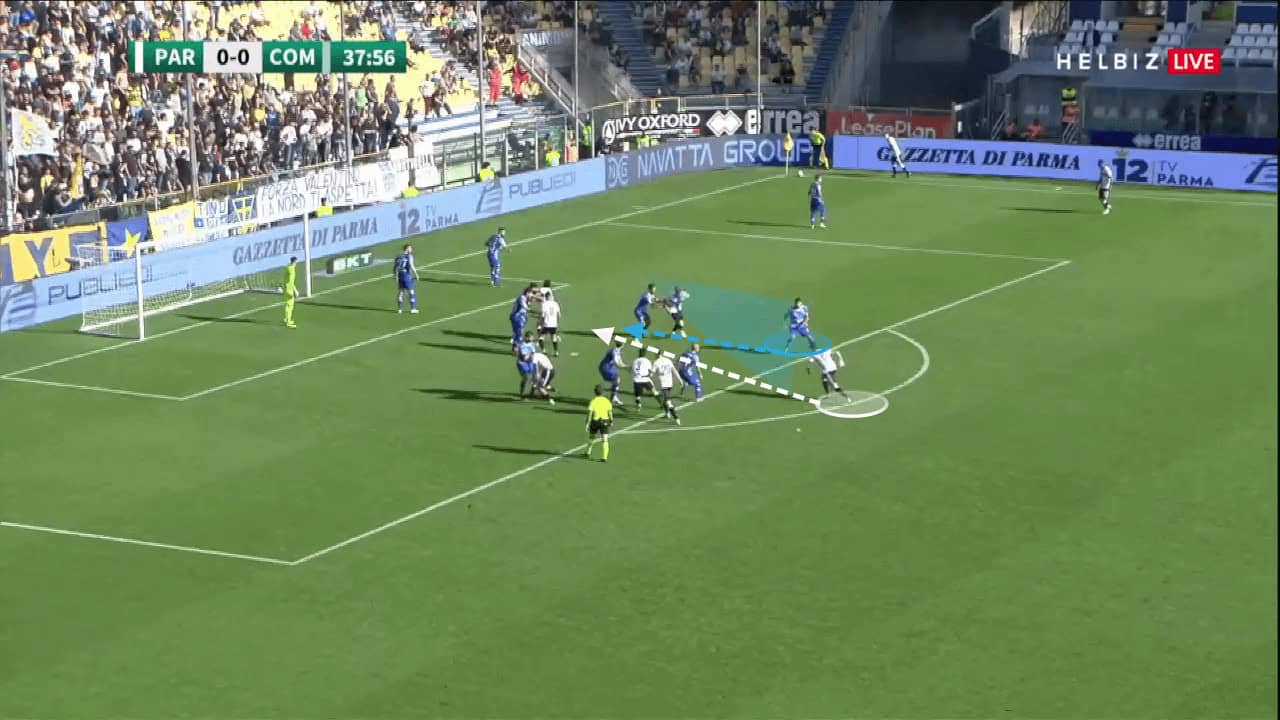
Como’s players have a habit of getting in the wrong positions when man-marking, leading to them becoming unaware of the trajectory of the crosses coming in. Picture below, we see yet again, a Como defender failing to get goal side of their marker. The Modena attacker managed to create separation through a body feint, allowing him a clear path to attack the goal. The Como defender is set on closely following his marker, which leads to him turning his back on the ball as the corner kick is being taken.
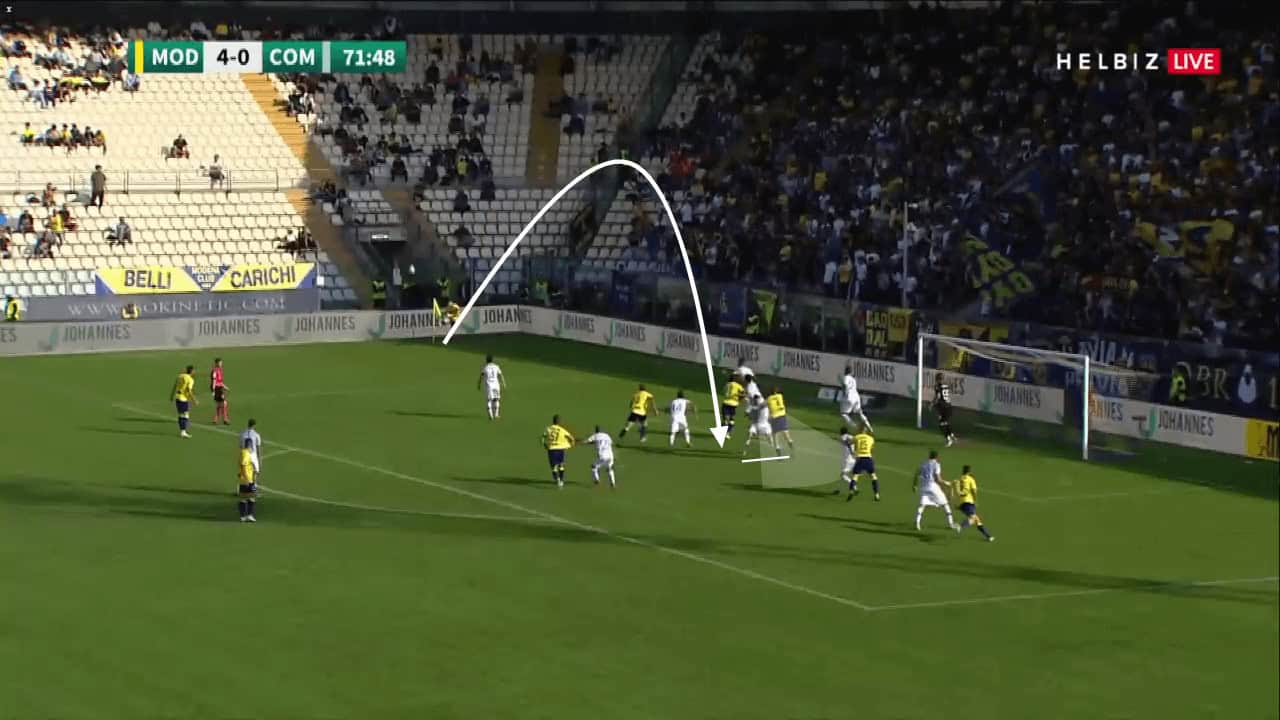
Once the defender has his back to goal, it becomes impossible for him to track the flight of the ball. In certain cases, like the one below, a floated cross doesn’t have to be as accurate, with the extra time the ball spends in the air allowing attackers to reposition themselves to attack the ball.
The Modena attacker has time to move into the optimal position to attack the ball, whilst the Como defender is busy turning back to face the ball again, and by the time they can track the flight off the ball, it is already too late. The Modena forward can jump early to attack the ball, which prevents any Como defender from being able to fight for the ball by the time they get in the correct position.
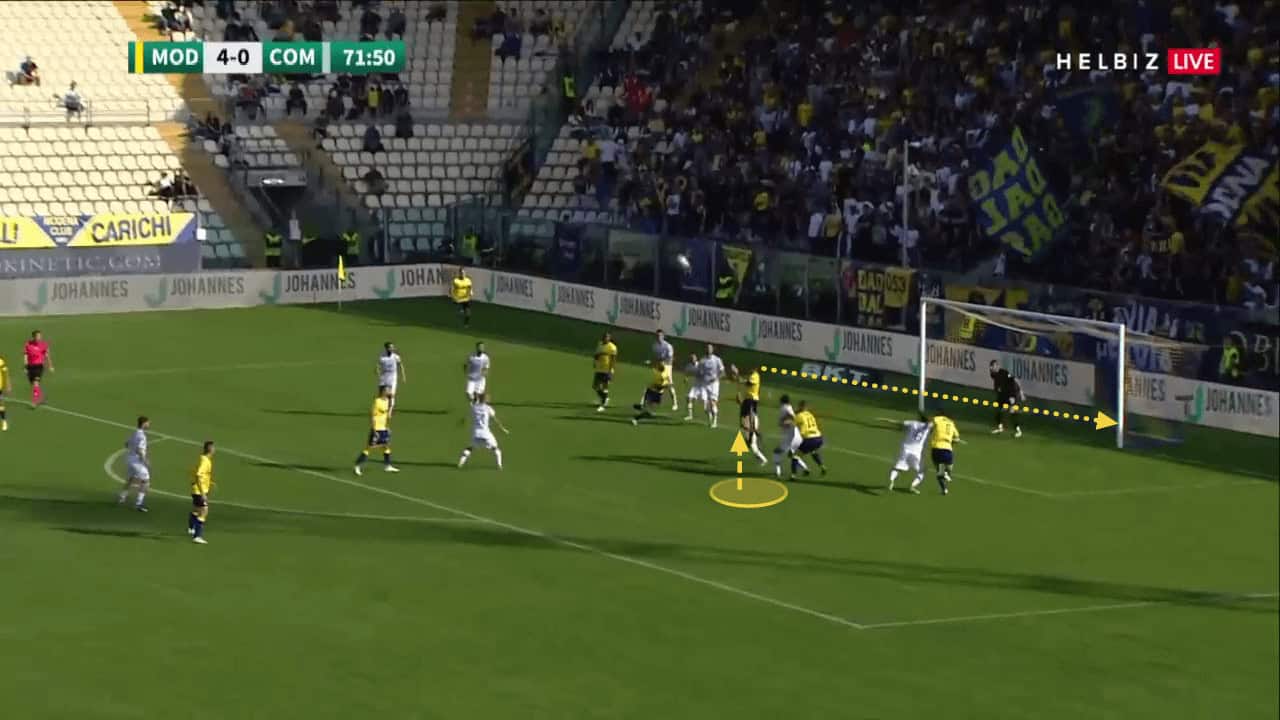
Another issue Como have faced in the first half of the season is poor sweeping from goalkeepers when attempting to claim crosses. Vigorito and Ghidotti have both faced issues when coming out to claim crosses this season. Below, we can see the keeper coming out attempting to claim the cross. However, he has fumbled the ball on a number of occasions, likely as a result of his inability to deal with contact.
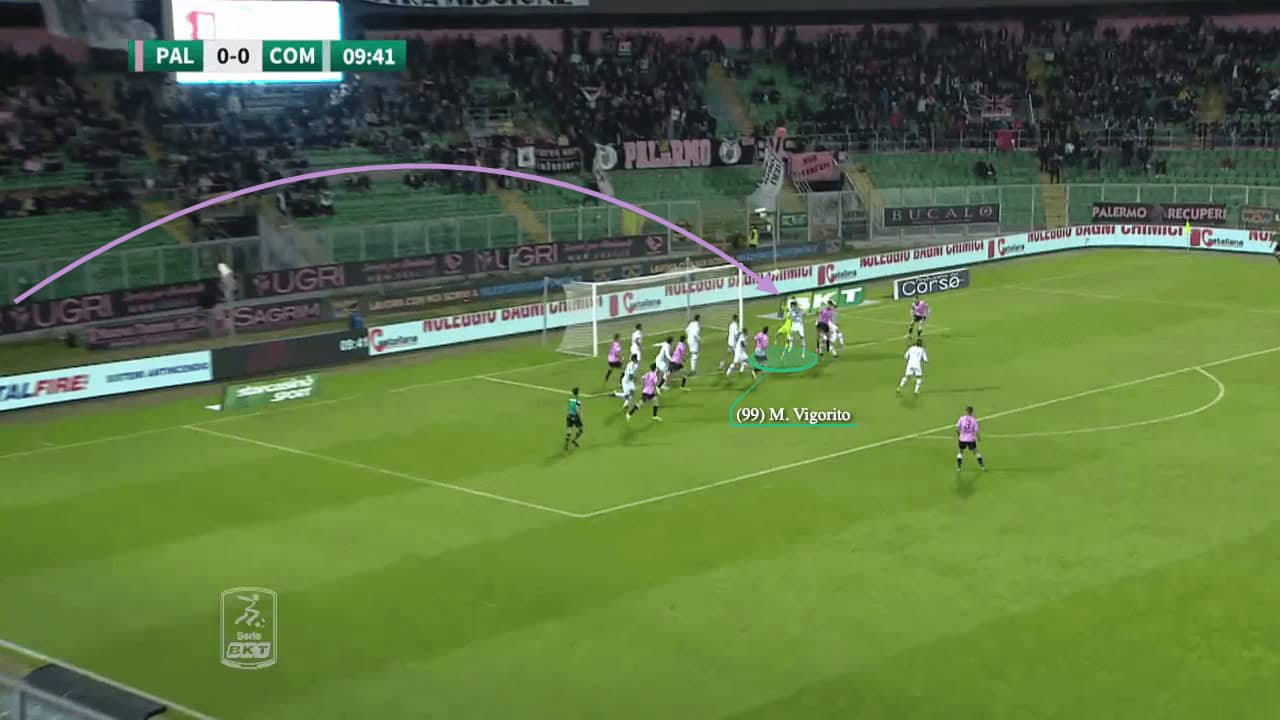
The ball slips through his hands and he falls over after he bumps into his own defender, leading Palermo to have an open goal, although the effort is blocked on the line.
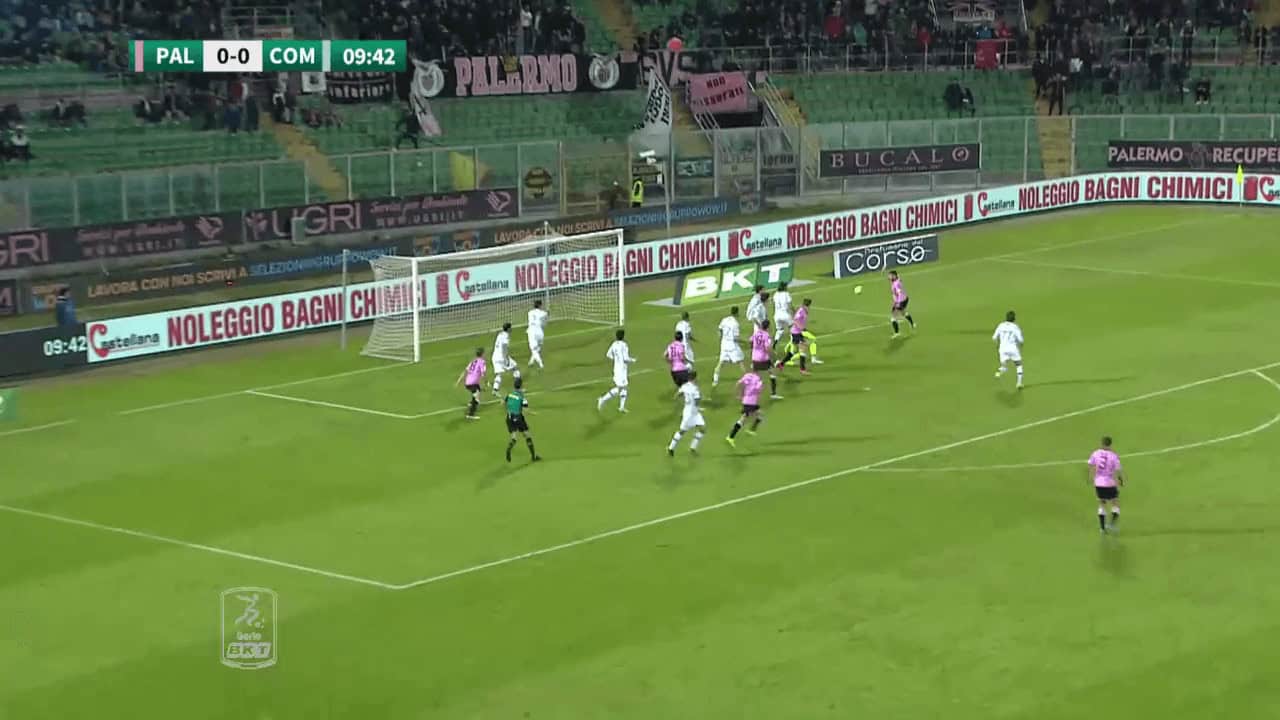
In the January transfer window, Como have looked to improve upon the situation by loaning in Stade Rennais goalkeeper Alfred Gomis who is highly experienced in both Ligue 1 and Serie A. His commanding ability should help the team avoid dealing with as many crosses, through his ability to claim them more often if the ball enters the six-yard box.
Recent zonal setup
After the international break in November, Como seem to have changed their defensive orientation. Rather than man marking, Como have swung to the other end of the spectrum by heavily zonally marking the six-yard box, where they had conceded many chances by allowing players to attack the six-yard box unopposed.
Pictured below is the structure they have been using for the past three months. The players highlighted in black all zonally mark the areas they are standing in, whilst one player also marks the front post. The player in green is ready to prevent a short corner from being taken, which leaves one man marker (blue) having to usually deal with around four players ready to attack the box.
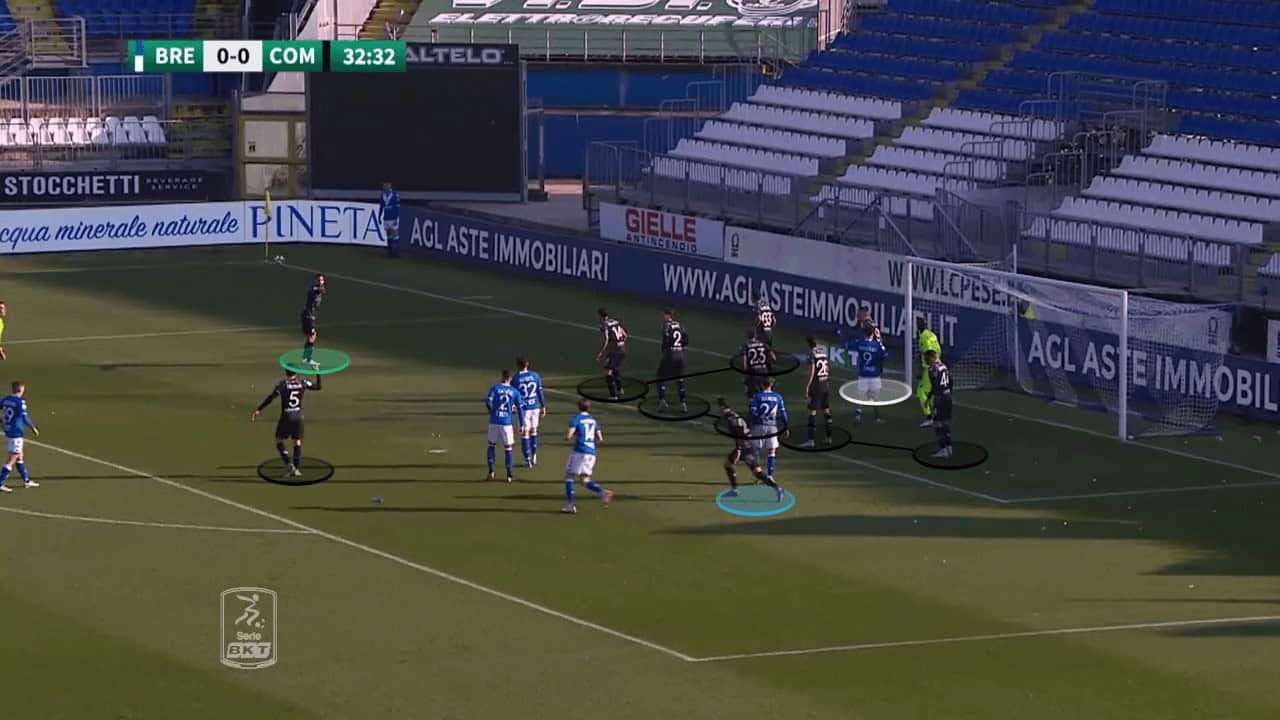
A big issue of the zonal system is the fact it allows so many players to attack the ball without markers. If a player can sprint for six yards without interruption before jumping for the ball, it means they will be able to use that momentum to propel themselves off the floor higher than any static defender can, unless the jump is timed to perfection.
The example below illustrates the free run the Frosinone player is about to have to attack the ball. He is slightly crouched down, ready to spring into life when the corner gets taken. When the ball arrives at the six-yard box, the Frosinone is able to outjump the entire Como zonal block and attempt a free header on goal.
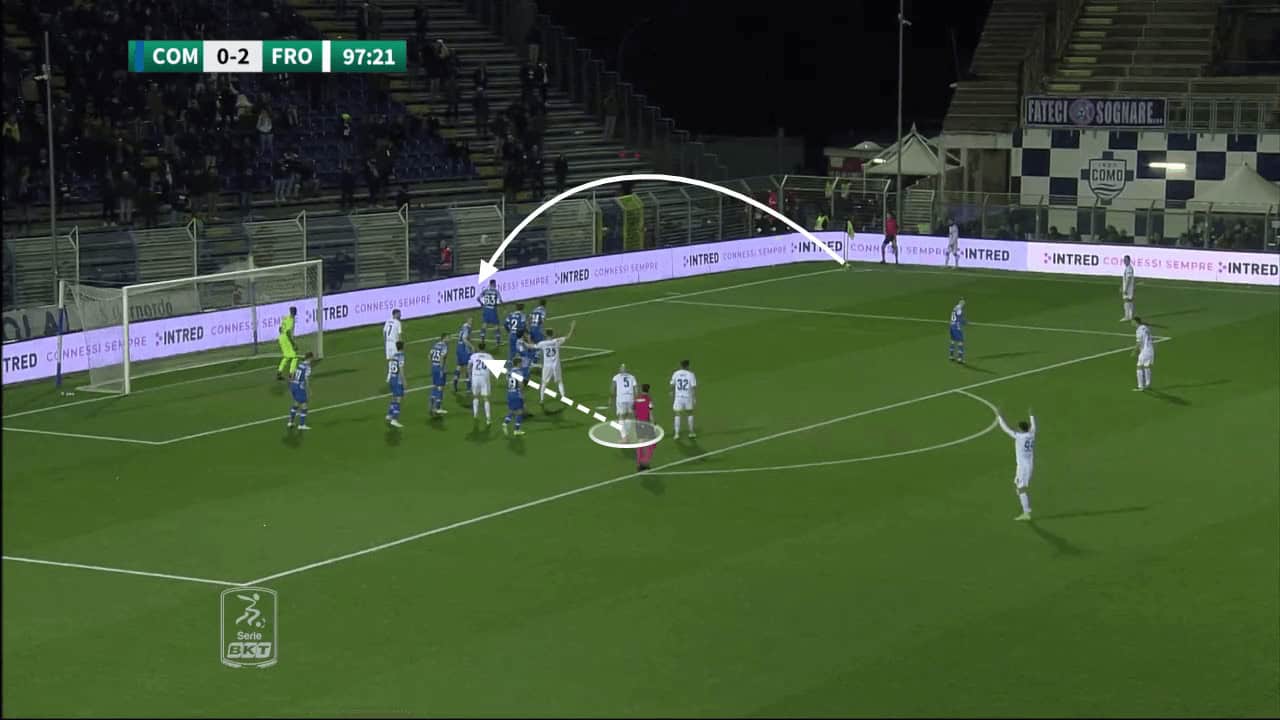
Como heavily overload the six-yard box which is overdoing it most of the time. Having six players in a line between both posts to prevent players from attacking the gaps in the six-yard box is quite unnecessary and leaves holes elsewhere. Whilst the six-yard line is well protected in this scenario below, it comes at a cost as none of the Sudtirol attackers around the penalty spot are tracked.
This is quite a basic routine in a sense, as the Sutirol attackers are already in space, and so don’t need to create separation to attack the ball. The ball simply gets crossed straight to them, which gives them a free header from 12 yards out. It may be slightly further from goal, but an unopposed header from 12 yards leads to a high-quality chance, with no work having to be done by the Sudtirol players to create it.
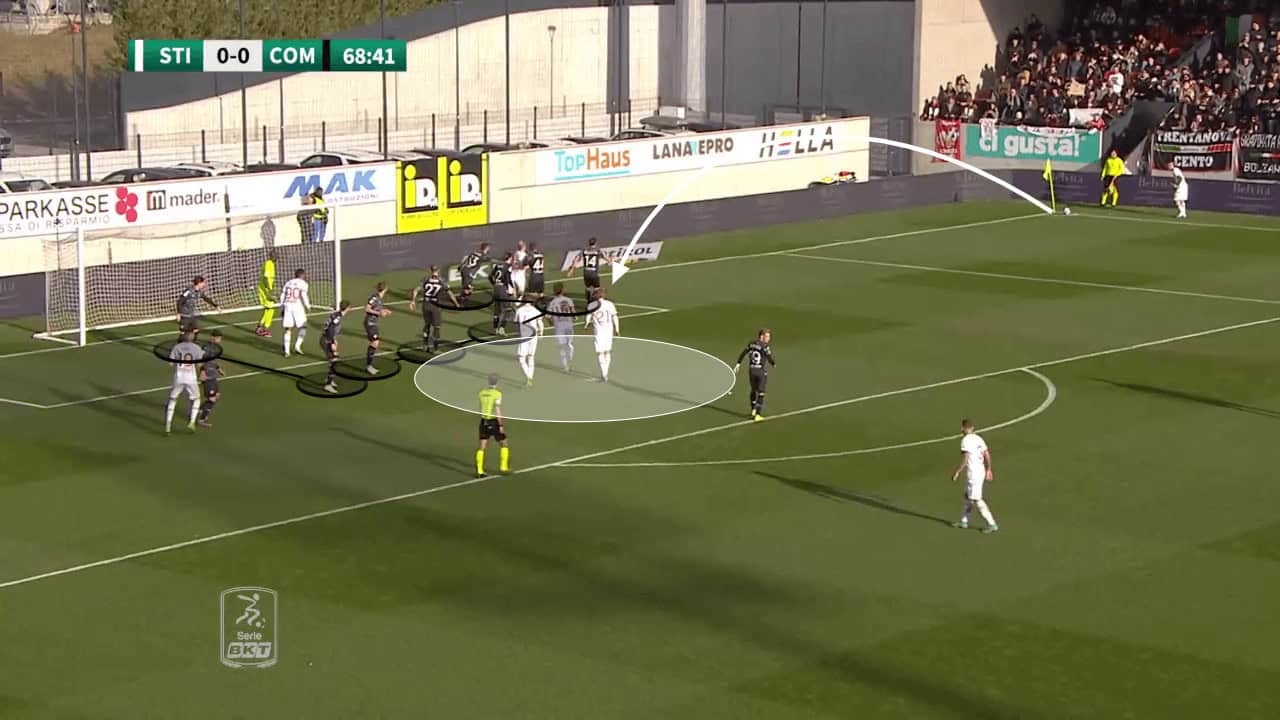
Below is yet another example of how the Como defenders fail to mark attackers, even in zonal areas where space is limited for opponents to attack the ball. There is no space between the defender and the goal for the Modena attacker to run into so the Como defender should not be worried about stopping the attacker from attacking the space. He may be worried about the attacker getting in front of him but that movement can easily be tracked if the defender stays parallel to the goal and can either shift to the left or right across the six-yard line.
However, yet again, the Como defenders are focused on gripping both of the attacker’s arms, which leads to the Como defender turning his back to the ball to keep hold of the attacker. This again leads to the defender having no clue where the ball is, meaning there is no way to clear it. The defender believes it is his job to prevent the attacker from reaching the header but is solely focused on the player which leads to a potential penalty being given away, or like below, the attacker outmuscling the defender and winning the header.
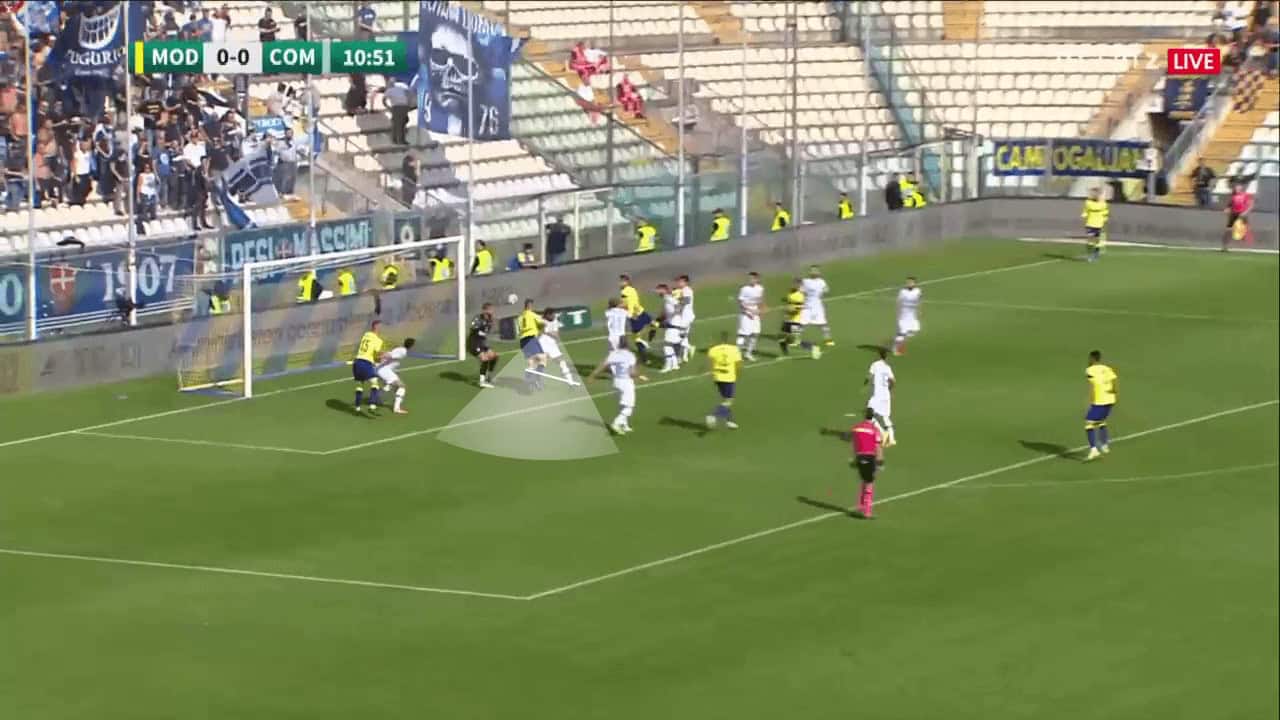
The final way in which Como have been caught out is through ball-watching when man-marking. During their zonal set-up, one player is usually left to man mark. While this should be easier with only one player making sharp movements, Como have failed to regularly track the movements. The defender is focused on the ball and forgets to use his arms to track the movement of the attacker, leading him to peel round to the back post and attack the ball unopposed.
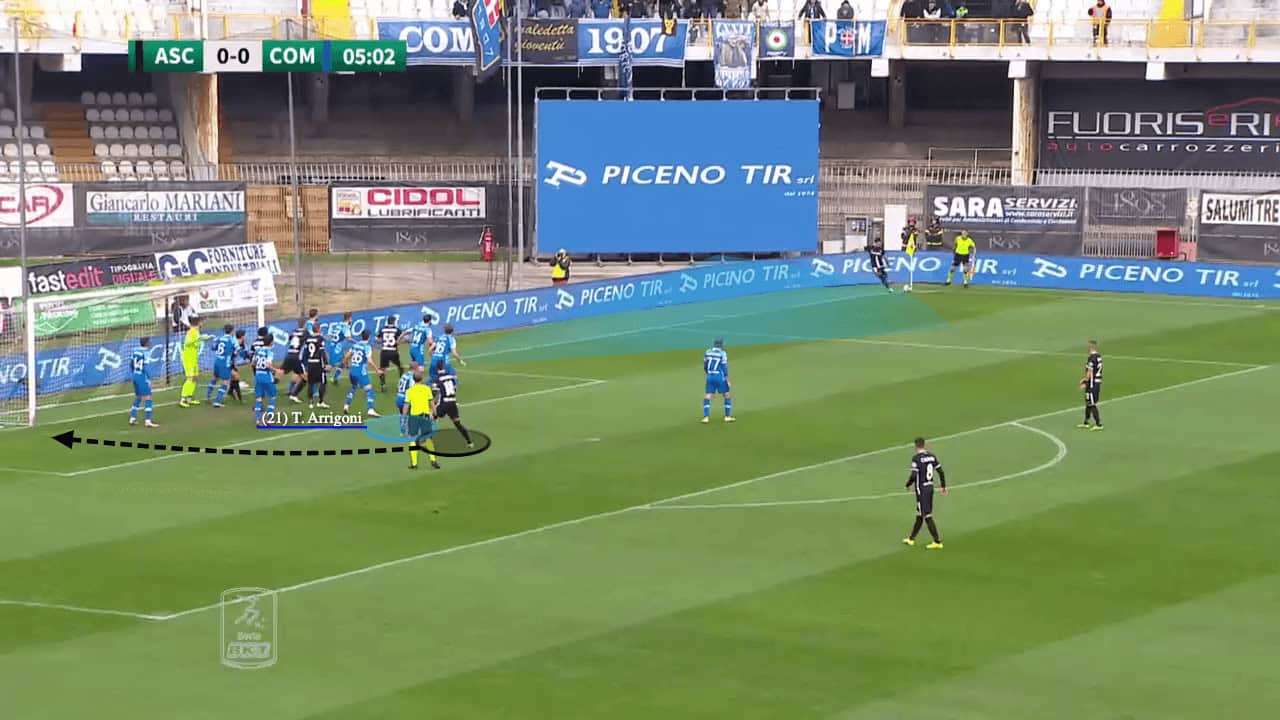
Summary
This set-piece analysis has displayed the different ways in which Como have shown their incompetence when dealing with dead ball situations. Como have since improved on their personnel, and have enjoyed a good run since the appointment of their new manager, but still continue to drop easy points by displaying a lack of attention to defending set pieces.
Como will continue to drop these simple points unless they remain focused on carrying out their defensive responsibilities from dead balls.






Comments